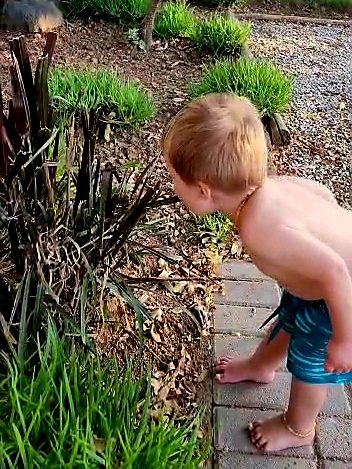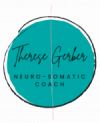“There are two ways to live: you can live as if nothing is a miracle or you can live as if everything is a miracle.”
Albert Einstein
Trailing behind a toddler, mom, and dog on my morning walk, I am reminded of Einstein’s choice about ‘living as if nothing is a miracle’, or as ‘if everything is a miracle’. Children don’t need to make this choice. They come with the latter set to ‘on’ by default. I see it in the little boy as awe and wonder literally spill out of his little arms pointing up at the tree, the way his little face lights up when he spots a bug in the grass, and his excited babbling as his attention darts from wonder to wonder while his wobbly little legs struggle to keep up.
His wonder ignites a sense of awe in me as delightful memories of unbridled wonder, curiosity, and enthusiasm witnessed in my similarly-aged great niece and nephew, shared long-distance through precious videos and photos, come streaming into consciousness. A broad smile spreads across my face as I recall my little nephew (photo below) imitating Zebras grazing in their Bushveld garden. “Like little earthquakes in the mind” is how leading awe-researcher, Michelle Shiota, describes its effect on our mind-body. And ‘little earthquakes in his mind’ is exactly what I imagine as I laugh out loud at the expression on his face after sampling a taste of Zebra grub!

Awe, according to Shiota and a fast-expanding body of research evidence, has a powerful effect on the human mind and body, and can be a valuable tool to enhance our health and well-being. Distinct from other emotions like fear, terror, beauty, and joy, it has a unique pattern of facial, bodily, and vocal expression recognised across cultures and a distinctive neurophysiological profile (improved vagal tone, reduced sympathetic arousal, increased oxytocin release, and reduced inflammation).
Awe-inducing experiences typically include nature, spirituality, music, dance or collective movement, and the use of psychedelics. When those ‘little earthquakes’ strike, it changes us in five ways. Apart from our neurophysiology, it diminishes our sense of self (too much of which has been linked to depression, anxiety, body-image problems, self-harm, drug abuse, eating disorders and social problems, such as aggression, racism, bullying, and everyday incivility); makes us more prosocial (meaning we become more helpful, less entitled, more cooperative and willing to share and sacrifice for others); increases our sense of belonging and feeling integrated with social networks and the natural world (one of the strongest predictors of mental and physical health and wellbeing); and increases our sense of meaning (associated with reduced distress and depression, greater personal growth, mental and physical wellbeing).
But the stand-out feature of awe, for me, lies in its ability to ‘open up the cracks through which the light comes in’ (thanks Leonard Cohen!)…when finding a piece of magic among the mundane leads us to ‘briefly lower the filters of our mental models, seeing the world a bit more as it is, less influenced by cognitive shortcuts and dominant assumptions, raising a question perhaps only humans can ask: “Where do I fit in?”’…and in that space, to feel the presence of something more than us, more than our dreary problems and concerns…rather, a connection with humanity, nature and life itself so powerful as to leave us physically transformed for the better.
So what are you waiting for?!
Opportunities to experience awe are all around and, like all positive emotions, experiencing even small doses over time accumulates to big gains in health and well-being. Here are 3 research-proven practices to get you started:
1. Take an AWE-some Walk
An awe-walk is like an ordinary walk or stroll but through ‘fresh eyes’. Find instructions, including a truly awe-some guided meditation, here.
2. Spin an AWE-some Yarn
This simple but powerful writing practice is said to be particularly helpful when we need to break up our routines and challenge ourselves to think in new ways. Find instructions here.
3. Watch an AWE-some Video
One of the truly awe-some characteristics of awe is its unique ability to evoke the same mind-body effects on us through images, videos, and awe-narratives as that of being exposed to it in its ‘natural’ form. This makes awe an incredibly useful, flexible, and accessible well-being and resilience-building tool. How? Simply set aside a few minutes to watch an awe-inspiring video of your choice. Here’s a short YouTube playlist I’ve put together or you can try this Ted playlist. Put the video in full-screen mode, shutting out other distractions as best as possible. Sit back and give it your full attention, immersing yourself in the experience. Feel the awe. Feel the wonder. Finally, take a moment to rest in the wonder of wonder itself.
References:
Alen, S. (2018). Eight Reasons Why Awe Makes Your Life Better. Greater Good Magazine: Science-Based Insights for a Meaningful Life. https://greatergood.berkeley.edu/article/item/eight_reasons_why_awe_makes_your_life_better#thank-influence
Keltner, D. (2016). Why Awe Is Such an Important Emotion, YouTube. https://www.youtube.com/watch?v=ysAJQycTw-0
Monroy, M., & Keltner, D. (2023). Awe as a Pathway to Mental and Physical Health. Perspectives on psychological science, 18(2), 309-320. https://doi.org/10.1177/17456916221094856
Pérez, K. A., Lench, H. C., Thompson, C. G., & North, S. (2022). Experimental elicitations of awe: a meta-analysis. Cognition and Emotion, ahead-of-print(ahead-of-print), 1-16. https://doi.org/10.1080/02699931.2022.2140126
Shiota, M. N. (2021). Awe, wonder, and the human mind. Annals of the New York Academy of Sciences, 1501(1), 85-89. https://doi.org/10.1111/nyas.14588
Shiota, M. N., Keltner, D., & Mossman, A. (2007). The nature of awe: Elicitors, appraisals, and effects on self-concept. Cognition and Emotion, 21(5), 944-963. https://doi.org/10.1080/02699930600923668

